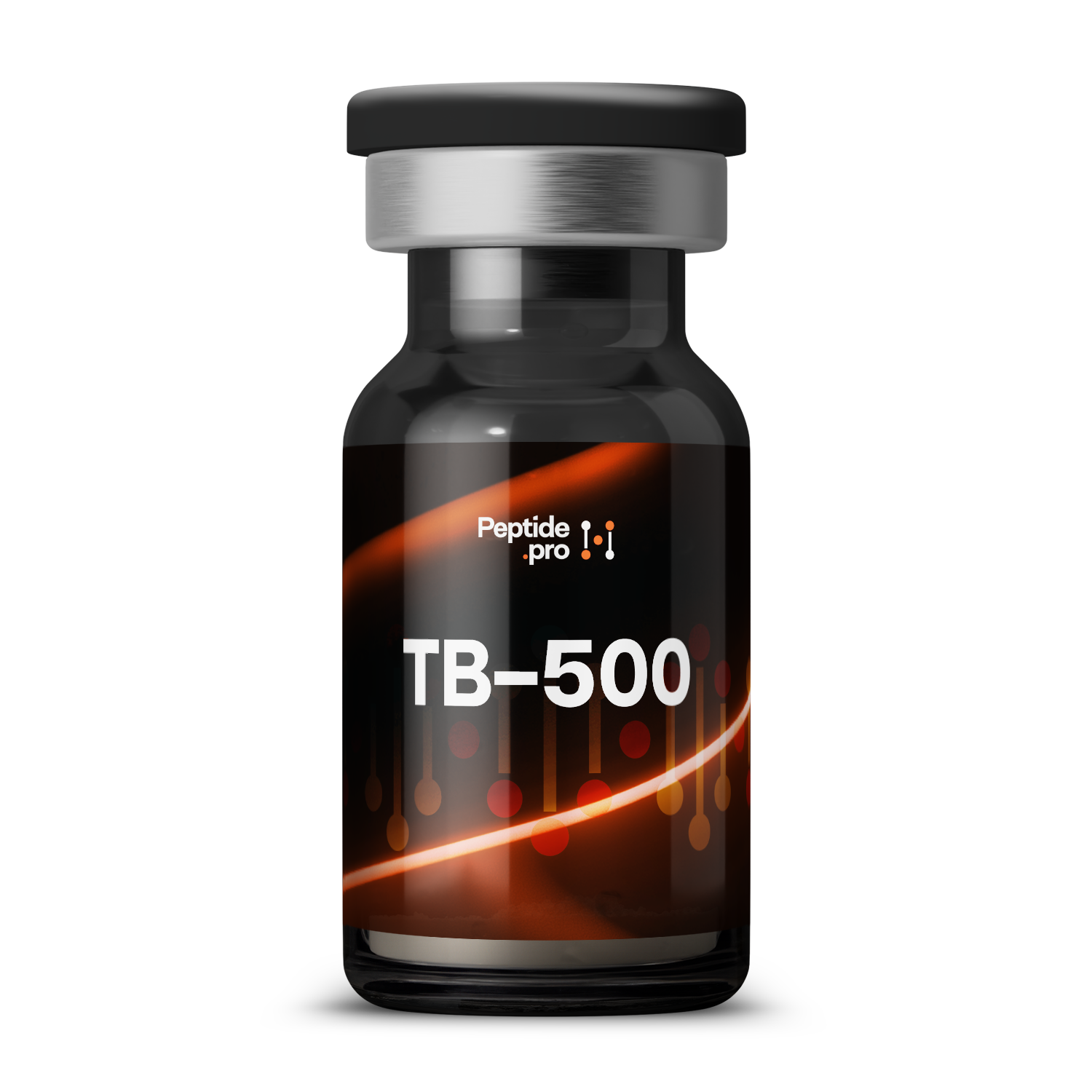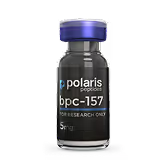TB-500
TB-500 is a 43–amino-acid fragment of the natural protein thymosin β-4 that helps cells move into injured areas and supports new blood-vessel formation. In research settings, it’s used to speed up healing of wounds, tendons, and muscle injuries by promoting tissue regeneration and reducing inflammation.
Compound Overview
About the product
The peptide corresponds to the biologically active N-terminal region of thymosin β-4, retaining the LKKTET sequence critical for actin binding. It contains only natural L-amino acids and no additional chemical modifications. TB-500 is synthesized by Fmoc solid-phase peptide synthesis and purified by HPLC to ≥95 % purity. Mass spectrometry confirms its correct sequence and molecular weight.
TB-500 promotes cell migration and angiogenesis (new blood-vessel formation) by upregulating expression of growth-promoting proteins such as VEGF (vascular endothelial growth factor). It also binds actin, facilitating cytoskeletal remodeling that supports cell movement into wounded areas. These actions reduce inflammation and accelerate tissue regeneration. Effects in human tissue models appear within days of peptide exposure.
TB-500 benefits are being studied for their potential to accelerate healing of skin wounds, muscle strains, and tendon injuries. In early human case reports, TB-500 use was associated with reduced healing time, decreased swelling, and improved range of motion. It is also under investigation for inflammatory conditions such as ulcerative colitis and corneal injuries. Controlled clinical trials are needed to confirm these observations.
Reported TB-500 side effects are minimal, most commonly transient injection-site redness or mild headache. No systemic toxicity or hormonal effects have been documented in limited human use. Long-term safety data, including effects on cell proliferation and cancer risk, are lacking. Monitoring of general health parameters and local tissue response is advised in research settings.
TB-500 is produced by Fmoc solid-phase peptide synthesis on a resin support, sequentially coupling 43 amino acids. After cleavage, the crude peptide is purified by preparative HPLC to research-grade purity. Quality control uses mass spectrometry and analytical HPLC to verify sequence integrity and purity. Manufacturing follows peptide-compounding standards under good laboratory practice.
TB-500 is classified for investigational research use only and is not approved by the FDA, EMA, or other major regulators. It cannot be prescribed or sold as a medical treatment. Researchers obtain it under investigational-new-drug or equivalent frameworks. No commercial or over-the-counter products contain TB-500.
Human dosing is not standardized; case-report protocols have used 2–5 mg subcutaneous injections two to three times per week for 2–6 weeks. Some studies combine a loading phase with higher initial doses followed by maintenance dosing. All administration should follow approved investigational protocols.
- Do use only within IRB-approved research settings with medical oversight.
- Do monitor wound-healing progress and any signs of abnormal cell growth.
- Don’t extrapolate animal-model findings directly to human treatments.
- Don’t combine with other investigational regenerative agents off-protocol.
- Q: How soon does TB-500 work?
- A: Users report early signs of reduced inflammation and improved mobility within 3–7 days.
- Q: Is TB-500 safe for long-term use?
- A: Long-term safety is unknown; research has focused on short courses of up to six weeks.
- Q: Can TB-500 be taken orally?
- A: No; only injectable routes have been evaluated in humans.
For research use only. Not approved for medical use.


